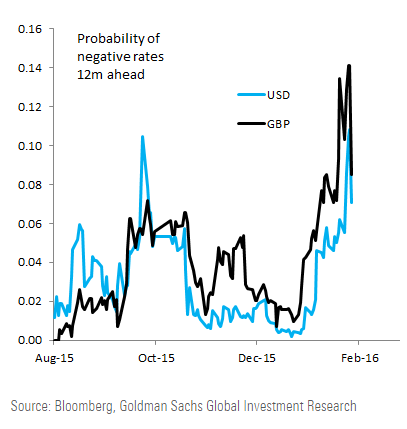As central banks continue to grapple with the increasing risk of deteriorating global growth, some are turning towards negative rates which are likely to widen the current interest rate divide between the currencies. However, as these policies start to bite and the USD strengthens, so too does the pressure upon the US economy.
Friday’s poor US unemployment figures had a surprising impact upon world currency markets buoying the USD by around 0.5%. The unemployment report was largely expected to be a weak number given the fall in a range of metrics in the lead up to the release. However, despite the NFP result of 151k falling well below the 190k consensus, the market largely focussed upon the decline in the US Unemployment rate to 4.9%. In addition, average hourly earnings rose around 0.5% m/m, suggesting that the fall in jobs growth may just be transitional or a statistical outlier. Subsequently, the market was not convinced of any growing risk to the Fed’s lift off schedule.
However, there is increasing tightening in the global financial conditions which could impact US economic activity in the coming quarter as well as labour conditions. Subsequently, any such slow down would likely place the forecasted rate hikes to the US Federal Funds Rate at risk of being delayed, or in fact reversed. Although the market consensus is still largely in line with the Fed’s expectations setting, the risk sentiment is starting to falter and the global front end rates have subsequently fallen, as both the ECB and BoJ return to a policy of easing. What this potentially means for the US is the short term, higher repricing of rates, subsequently benefiting both the USD and GBP.
In the medium term, expect the USD to bounce back from its recent routs and continue to rise whilst the diverging monetary policies between the ECB and the Fed continue. In addition, as Japan also moves to undertake a negative interest rate policy, capital will seek yield and the outflows are partially expected to head state side. This further complicates the US Federal Reserve’s policy of interest rate normalisation as the US trade deficit grows in line with the strengthening currency, further impacting shrinking US exports.
Subsequently, both the possibility of further rate hikes as well as continued strength within the US labour markets is now in question. In addition, assuming a 3-month constant OIS spread the probability of future negative rates in the US and UK has recently touched new highs. Despite this concerning indicator, market expectations still largely point towards a range of expected rate hikes throughout 2016. However given both the recent downturn in world growth, as well as upward pressure on currency valuations, this scenario seems unlikely.
Ultimately, when the market realises that rate normalisation may no longer be on the table, expect a sharp depreciation in the US Dollar, which could lead to an additional round of the currency depreciation war throughout Asia.
Risk Warning: Any form of trading or investment carries a high level of risk to your capital and you should only trade with money you can afford to lose. The information and strategies contained herein may not be suitable for all investors, so please ensure that you fully understand the risks involved and you are advised to seek independent advice from a registered financial advisor. The advice on this website is general in nature and does not take into account your objectives, financial situation or needs. You should consider whether the advice is suitable for you and your personal circumstances. The information in this article is not intended for residents of New Zealand and use by any person in any country or jurisdiction where such distribution or use would be contrary to local law or regulation. Knight Review is not a registered financial advisor and in no way intends to provide specific advice to you in any form whatsoever and provide no financial products or services for sale. As always, please take the time to consult with a registered financial advisor in your jurisdiction for a consideration of your specific circumstances.
Recommended Content
Editors’ Picks
EUR/USD edges lower toward 1.0700 post-US PCE

EUR/USD stays under modest bearish pressure but manages to hold above 1.0700 in the American session on Friday. The US Dollar (USD) gathers strength against its rivals after the stronger-than-forecast PCE inflation data, not allowing the pair to gain traction.
GBP/USD retreats to 1.2500 on renewed USD strength

GBP/USD lost its traction and turned negative on the day near 1.2500. Following the stronger-than-expected PCE inflation readings from the US, the USD stays resilient and makes it difficult for the pair to gather recovery momentum.
Gold struggles to hold above $2,350 following US inflation

Gold turned south and declined toward $2,340, erasing a large portion of its daily gains, as the USD benefited from PCE inflation data. The benchmark 10-year US yield, however, stays in negative territory and helps XAU/USD limit its losses.
Bitcoin Weekly Forecast: BTC’s next breakout could propel it to $80,000 Premium

Bitcoin’s recent price consolidation could be nearing its end as technical indicators and on-chain metrics suggest a potential upward breakout. However, this move would not be straightforward and could punish impatient investors.
Week ahead – Hawkish risk as Fed and NFP on tap, Eurozone data eyed too

Fed meets on Wednesday as US inflation stays elevated. Will Friday’s jobs report bring relief or more angst for the markets? Eurozone flash GDP and CPI numbers in focus for the Euro.
